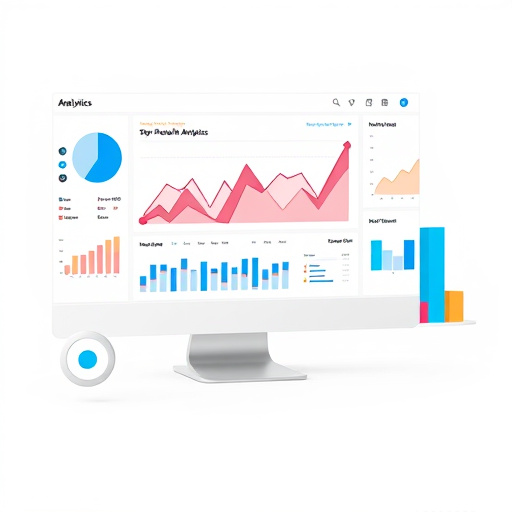Schema markup implementation is a strategic method for local businesses to boost online visibility and attract more customers by structuring data using specific codes or tags, providing search engines like Google with valuable context about their offerings, location, operating hours, and reviews. This enhances website credibility, increases traffic, and improves local search results across all devices. After implementing schema markup, tracking KPIs such as organic traffic, click-through rates, impressions, bounce rates, time spent on pages, and conversion rates is crucial to assess its impact on local SEO. Positive trends indicate successful optimization, demonstrating the tangible benefits of schema markup for improved visibility and engagement.
Local businesses are missing out on significant online visibility opportunities. Schema markup implementation isn’t just a trend, it’s a proven strategy to enhance search engine understanding and boost local SEO rankings. This article guides you through the process, offering a step-by-step approach to harness the power of schema markup. From grasping the fundamentals and benefits, to practical implementation techniques and tracking success, discover how this powerful tool can drive more qualified leads straight to your doorstep.
- Understanding Schema Markup: The Basics and Benefits for Local Businesses
- Implementing Schema Markup: Step-by-Step Guide to Enhance Online Visibility
- Measuring Success: Tracking and Analyzing the Impact of Schema Markup on Local SEO
Understanding Schema Markup: The Basics and Benefits for Local Businesses

Schema markup implementation is a powerful tool for local businesses to enhance their online visibility and attract more customers. At its core, schema markup involves using structured data to help search engines better understand the content on a website. By adding specific codes or tags to web pages, businesses can provide valuable context about their offerings, location, operating hours, reviews, and more. This structured data is then crawled and interpreted by search engines like Google, allowing them to display rich snippets in search results, making local businesses stand out from the competition.
For local businesses, schema markup implementation offers significant benefits. It not only improves website visibility but also boosts credibility and trust with potential customers. By showcasing accurate information such as addresses, phone numbers, and customer reviews directly in search results, businesses can encourage more click-throughs and conversions. Moreover, with the increasing importance of mobile-friendly website design and website speed optimization, schema markup works hand-in-hand to enhance local search optimization, ensuring that businesses reach their target audience effectively across all devices.
Implementing Schema Markup: Step-by-Step Guide to Enhance Online Visibility

Implementing Schema Markup is a strategic move for local businesses aiming to boost their online presence and attract more customers. It’s a powerful tool that provides search engines with structured data about your business, allowing them to better understand and represent your company in search results. This, in turn, increases website traffic and visibility.
Here’s a step-by-step guide to help you navigate the process:
1. Identify Relevant Schema Types: Start by assessing your business offerings. Choose schema types that align with your services or products. For instance, if you offer web design services, consider using the ‘LocalBusiness’ and ‘Service’ schemas.
2. Research and Select Markups: Dive into the specific markups within each selected schema type. The ‘WebDesign’ markup, for example, can enhance your business’s online presence by detailing your services, pricing, and client testimonials.
3. Implement Schema Markup on Your Website: Integrate the chosen markups into your website’s HTML code. This might require some technical knowledge or the assistance of professional web design experts. Ensure that each markup is correctly structured and placed within relevant sections of your site.
4. Test and Validate: Utilise tools like Google’s Structured Data Testing Tool to validate your schema implementation. This tool checks for syntax errors and ensures your data is processed correctly by search engines.
5. Monitor and Update: Schema markup isn’t a one-time task. Regularly review and update your markups to reflect any changes in your business offerings or information.
Measuring Success: Tracking and Analyzing the Impact of Schema Markup on Local SEO

Measuring success is a vital step after implementing schema markup to understand its impact on local SEO. By tracking key performance indicators (KPIs), businesses can gauge the effectiveness of this strategy. One critical metric to monitor is the increase in organic traffic, especially from local search queries. Tools like Google Analytics and Search Console can provide valuable insights into clicks, impressions, and rankings for relevant keywords.
Additionally, analyzing user behavior on the website post-implementation offers a deeper understanding. This includes studying bounce rates, time spent on pages, and conversion rates. For instance, if a local business in Hollywood FL sees a significant reduction in bounce rates and an uptick in bookings or inquiries after schema markup optimization, it indicates successful implementation. Similarly, web design agencies in Dallas or nearby areas can use these analytics to showcase the tangible benefits of their SEO services to clients, demonstrating improved visibility and engagement for local businesses.
Schema markup implementation is a powerful strategy for local businesses to boost their online presence and visibility. By utilizing structured data, these businesses can enhance search engine understanding of their offerings, resulting in improved local SEO rankings. Through a well-planned and executed schema markup strategy, as outlined in this article, companies can attract more customers, increase web traffic, and ultimately thrive in today’s digital landscape.














